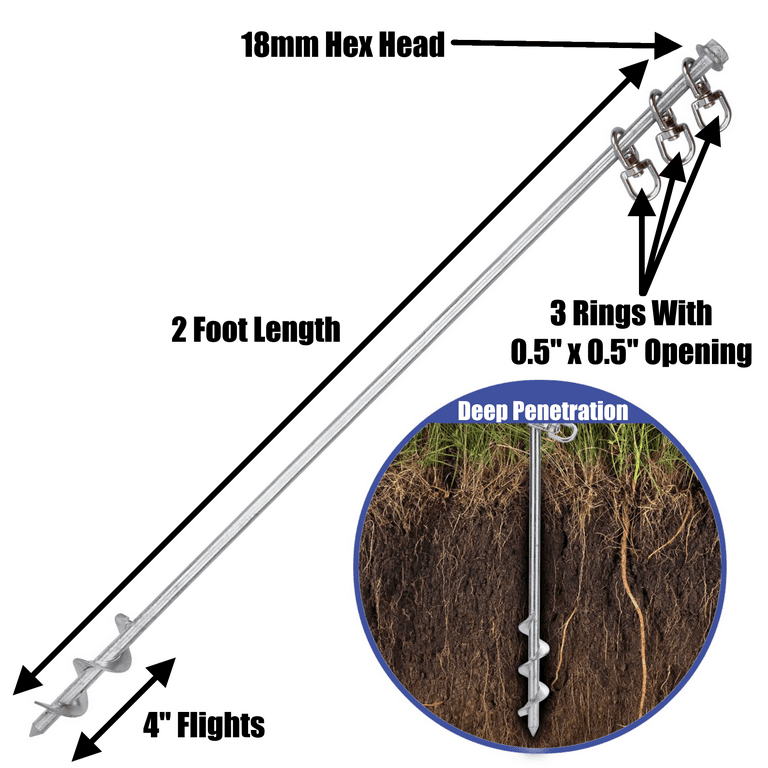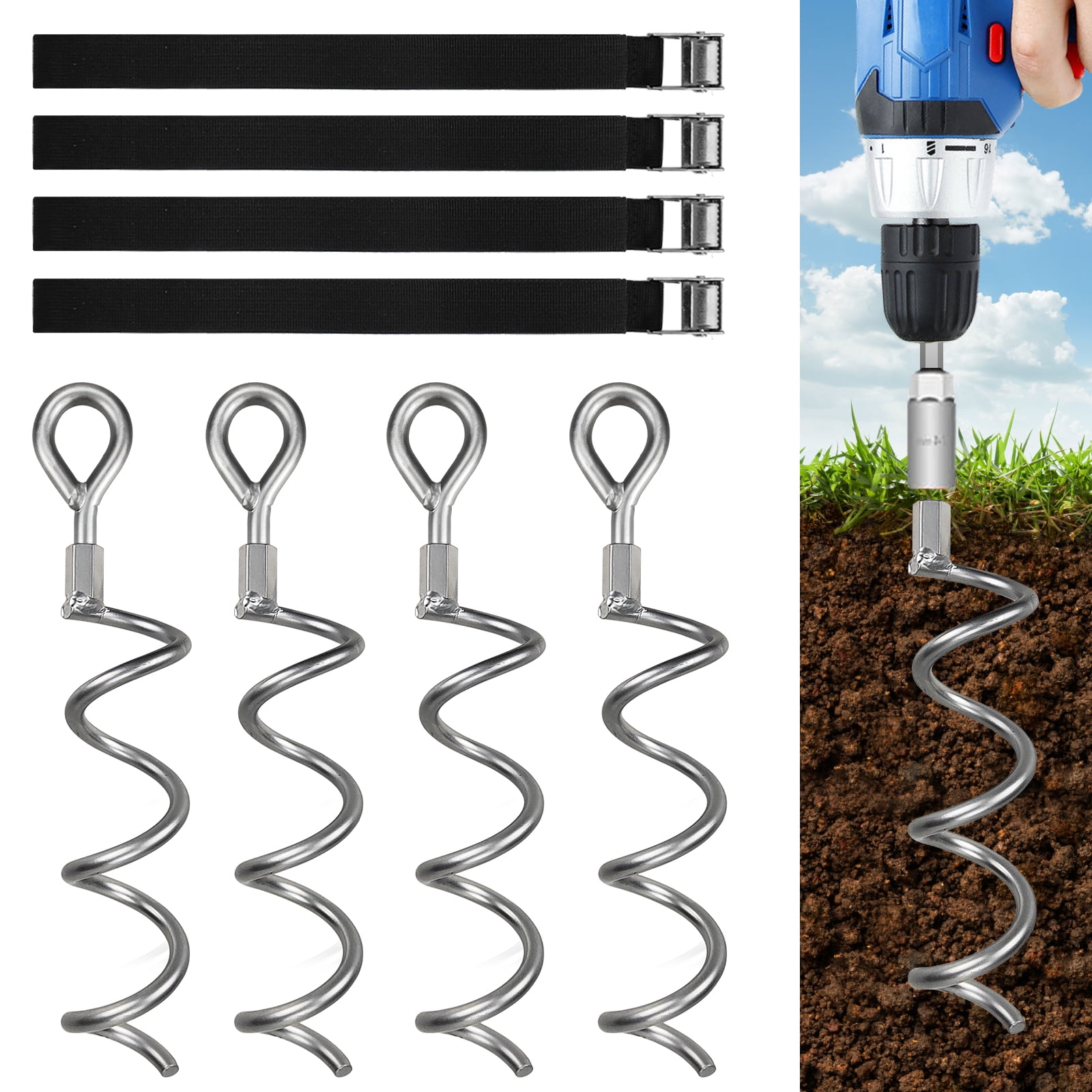Analyzing Various Ground Anchor Models to Find the Ideal Match for Secure Installation
Analyzing Various Ground Anchor Models to Find the Ideal Match for Secure Installation
Blog Article
Discover the Various Types of Ground Support for Your Next Project
When getting started on a building and construction or landscaping task, understanding the different sorts of ground anchors offered is critical to making certain both stability and resilience (Ground Anchor). From auger anchors, which succeed in varied soil problems, to risk anchors developed for short-term setups, the choices are numerous. In addition, concrete and screw supports existing one-of-a-kind benefits in details circumstances, while deadman anchors are customized for applications calling for resistance to side forces. The option of an appropriate anchor kind can considerably influence the overall success of your job, triggering additional expedition right into their particular benefits and applications.

Auger Anchors
Auger supports are a preferred option in numerous construction and landscape design tasks because of their unique style and efficient securing capacities. These anchors contain a helical screw-like shaft that is driven into the ground, enabling a safe and secure and secure hold. The spiral design facilitates simple setup and makes best use of resistance against lateral forces, making auger anchors specifically effective in applications such as fencing, short-lived frameworks, and disintegration control.
The installation procedure of auger anchors is reasonably uncomplicated. They can be by hand or mechanically installed, depending upon the size and required deepness. This versatility permits their use in varied soil conditions, from sandy to clayey terrains. Auger supports can be easily gotten rid of and reused, which includes to their cost-effectiveness and sustainability.
One of the considerable advantages of auger supports is their ability to distribute tons equally throughout the bordering dirt, lowering the danger of soil disruption and reducing ecological influence. Furthermore, they are much less susceptible to heaving or loosening up over time contrasted to traditional anchoring methods. Auger anchors are an exceptional selection for jobs needing durable and trusted anchoring solutions.

Stake Anchors
When it pertains to safeguarding structures in a range of outside applications, risk anchors provide a simple and reliable option. These supports are generally created from long lasting products such as steel or light weight aluminum, created to stand up to environmental anxieties while giving optimum security. Their straightforward design permits for fast installment, making them a perfect selection for temporary or irreversible anchoring requirements.
Risk supports are especially valuable in protecting tents, canopies, and various other light-weight structures versus wind and weather. They operate by being driven into the ground at an angle, developing a strong hold that resists pull-out pressures - Ground Anchor. The efficiency of stake supports relies on several factors, consisting of soil kind, wetness material, and the angle of setup
For added security, lots of risk supports come with attachment points for bands or ropes, allowing for tension modifications as necessary. In applications such as landscaping or building and construction, they can properly stabilize devices or frameworks on uneven terrain. On the whole, risk supports supply a versatile and economical solution for securing different exterior installments, making them a preferred option for specialists and do it yourself enthusiasts alike.
Concrete Anchors
Concrete supports supply a durable remedy for protecting structures to concrete surfaces, guaranteeing stability and safety and security in different applications. These supports are important for projects ranging from residential building and constructions to large commercial installations. They are available in various types, including expansion supports, sticky supports, and undercut anchors, each made for certain tons needs and environmental conditions.
When installed,Expansion anchors rely on mechanical systems to grip the concrete. They are excellent for medium to durable applications. Glue anchors make use of high-strength epoxy or resin to bond the anchor to the concrete, using remarkable load-bearing capabilities, especially in split concrete circumstances. Undercut supports create a special form within the concrete, giving exceptional holding power, particularly in applications where tensile lots prevail.
Selecting the suitable concrete anchor entails thinking about elements such as the weight of the load, the problem of the concrete, and ecological conditions. Appropriate setup techniques are essential to ensure optimal efficiency and dependability. When performed correctly, concrete supports considerably enhance the architectural stability of various tasks, making them crucial in modern building and construction methods. Recognizing the certain requirements of your job will certainly help in selecting the right kind of concrete support for the task.
Screw Anchors

Screw supports are a versatile securing option that can be successfully used in a range of applications where traditional concrete anchors may not be sufficient. These anchors contain a helical layout that allows them to be easily driven right into the ground, making them perfect for use in soil and other substrates. Their special framework provides exceptional holding power and resistance to pull-out pressures, making them appropriate for countless projects, from landscape design to structural support.
One of the key benefits of screw supports is their simplicity of installment. They need link very little equipment and can typically be installed without the requirement for excavation, which saves both time and labor prices. Furthermore, screw supports can be eliminated and recycled, providing a lasting remedy for temporary applications.
Screw supports are especially helpful in areas where dirt conditions are challenging, such as loosened or sandy dirts. Their capacity to be installed at differing depths enables personalization based upon specific project demands. In general, screw supports provide a trustworthy and reliable securing approach, making them a superb selection for professionals and engineers looking for reliable options for their projects.
Deadman Anchors
Deadman anchors function as a robust service for maintaining frameworks in tough problems, especially where standard anchoring methods may fail. These supports contain big, heavy things hidden underground, which produce resistance against lateral forces. The design commonly includes a straight element, such as a block of concrete or a steel plate, hidden in the dirt, to which bands or cords are attached.
The performance read here of deadman anchors lies in their capacity to distribute tons over a larger location, lowering the danger of failure in unstable soil problems. They are especially helpful in applications such as preserving walls, momentary structures, and slope stabilization, where soil motion can compromise the honesty of the framework.
Installation of deadman anchors requires careful planning to ensure they are put at the correct deepness and orientation, maximizing their load-bearing capacity. While they may call for more labor and material than lightweight anchors, their dependability in negative conditions makes them very useful for long-lasting jobs. Deadman anchors are flexible and can be adapted to numerous applications, making them a best selection for designers encountering one-of-a-kind difficulties in their jobs.
Final Thought
In recap, selecting the appropriate kind of ground anchor is crucial for making sure stability and safety in different projects. Auger supports succeed in varied soil problems, while stake supports suit short-term applications. For concrete surfaces, development and adhesive supports provide trusted alternatives, and screw supports supply flexibility in tough terrains. Deadman supports click here for more info are especially effective in withstanding side forces for preserving walls. Cautious consideration of these choices will boost task results and architectural integrity.
In addition, concrete and screw supports present special benefits in details situations, while deadman supports are customized for applications calling for resistance to lateral forces - Ground Anchor.Auger anchors are a preferred selection in various building and landscape design tasks due to their unique style and reliable securing abilities. They come in various types, including development anchors, sticky supports, and undercut anchors, each made for specific tons requirements and environmental problems
Glue supports make use of high-strength epoxy or material to bond the anchor to the concrete, providing remarkable load-bearing capacities, particularly in split concrete situations. Generally, screw supports supply a reliable and dependable securing technique, making them a superb option for engineers and contractors looking for effective solutions for their tasks.
Report this page